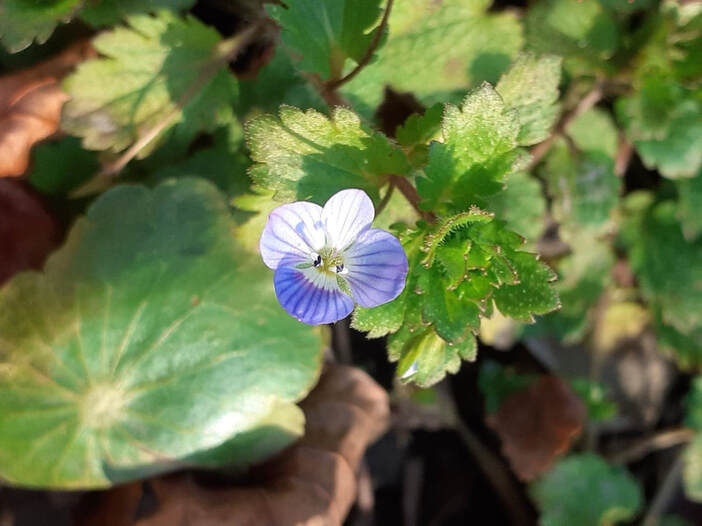|
If you are anything like me and spend most of your time looking at the ground (that’s where the cool stuff is), you’ll probably have noticed these tiny flowers popping up all over town. So diminutive in size, these little blooms go mostly unnoticed and even if they are noticed, they take up so little space that most people’s minds quickly move on and think about bigger things. But let’s take a moment to appreciate these tiny harbingers of spring, the Bird’s-eye Speedwell.
Bird’s-eye Speedwell, or Veronica Persica, is an introduction native to Asia and parts of Europe. Of all the Speedwells the Bird’s-eye is considered the one of the largest with it’s blooms coming in at a whopping 1cm wide. The thick and sprawling growth pattern makes this an aggressive ground cover with most of its vegetative growth occurring during the cool weather of late winter and early spring. Despite its unassuming nature, Bird’s-eye Speedwell is playing a big role in some scientific studies of its medicinal properties. Extracts of this plant have demonstrated anti-fungal, anti-inflammatory, and antiviral activities and have shown to accelerate the healing process when given to test subjects. Modern scientists aren’t the only ones that have noticed this little plant’s healing properties. In the mid-20th century Afghan herbalist, Mahomet Allum, used the plant to treat patients with heart trouble. Even without its reported healing properties, this lilliputian bloom decorates the ground around town, attracting small bees and telling the world that spring is near! By: Janet Douberly, Program Coordinator Comments are closed.
|
AuthorWrite something about yourself. No need to be fancy, just an overview. Archives
December 2023
Categories |

 RSS Feed
RSS Feed